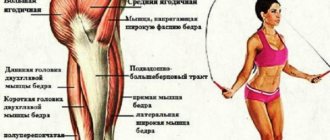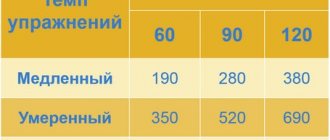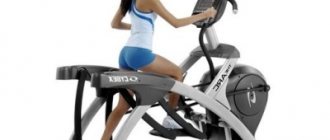Running calorie calculator will show the amount of energy burned during exercise
The main rule is that the average person burns 65 calories per 1 km of running. But sometimes you don't want to try the general rules on yourself. Wear a sports watch to measure calories burned. But what if you jog and use less energy? Or is your heart not beating as fast or as slow as everyone else's? (Not to mention a study from Stanford University and the Swiss School of Sports and Health Sciences tells us that fitness trackers like the Apple Watch have an error rate of 27 percent.)
Further:
Calories burned while running calculator
The simple While Running Calculator , which you will find below, will show you how many calories your body uses while you are running. Add this to the calories you burn outside of training throughout the day. At the end you will get the amount of calories that needs to be compensated.
This tool will show you the number of calories burned while running.
It is not necessary to know the number of calories burned while running. This can only help make your workouts more effective. For example, with a goal to lose weight or to understand how best to eat before a race.
Here's everything you need to know why calories matter:
Calorie calculator
Online calorie consumption calculator
Anyone who is interested in losing weight and leading a healthy lifestyle begins to count the calorie content of the foods they eat. Dieting is just one way to get a beautiful figure, but without physical activity its results are insignificant.
You can burn calories more efficiently by doing a variety of activities: walking in the park, cleaning the house, or doing strength exercises at the gym. The online calculator will help you understand your own activity, adjust your training program and achieve better results.
Who is the calorie consumption calculator designed for?
The application can be used by all people:
- athletes;
- trainer;
- nutritionists;
- those wishing to lose or control weight.
If you are going to keep track of your calorie consumption, the calculator will be an ideal assistant. It will quickly calculate how much you spent in 10 minutes of jogging or 1 hour of energetic dancing. The simplicity of the interface will not allow you to get confused.
Using the application, you can determine the difference between calories received and spent per day, and use the data obtained to lose weight or gain weight.
Calorie consumption at rest and movement
You spend energy not only during exercise, but also when you are simply sitting at work or relaxing on the couch. Why does this happen? The body uses energy to digest food, breathe, warm the body, and conduct chemical reactions. Thus, even in the calmest moment you lose weight.
Calculate your resting calorie expenditure; the calculator will show approximately correct values. Do the same for doing yoga or walking the dog and see the results.
How to use the calculator?
The application is available for both registered users and ordinary site guests. If you want to remember the calculation, log into your account, save the results and track your activity statistics.
The calorie consumption calculator works online. To start calculations:
- Enter the person's weight in kilograms.
- Select the type of activity. Start typing a word (for example, “squats” or “badminton”), select an activity from the drop-down list.
- Enter the time in minutes spent on the exercise.
- Click "+" to add a new activity to the calculator.
A window will appear in the right corner, which will display the total calories and the total result. If you added an item by mistake, you can remove it from the table by clicking on the red cross.
The exercise and calorie calculator complements the food calorie calculator located on our website. You can determine how many calories came into your body during the day and how many were spent on physical activity, and then compare the value with the daily value. By combining tools, you will build your own training program, maintain or reduce body weight.
Warning
Please remember that the calorie expenditure calculator can only show you an approximate calorie expenditure. It’s all about the individual characteristics of the body, the intensity and correctness of performing these actions, as well as many other factors.
What are Calories?
Calories are the fuel that keeps our bodies moving. One calorie is equal to one unit of energy. And our body needs this energy for everything. Starting from breathing, ending with the athlete crossing the finish line. We get calories (naturally) from food.
- 1 gram of fat contains 8 calories
- 1 gram of protein or carbohydrate contains 4 calories
Unused calories accumulate in the body's fat cells, which begin to release energy when needed. If you consume more calories than you burn, you begin to gain weight. If, on the contrary, you burn more (through training) than you consume, the weight will most likely go down.
Burning calories depending on the type of running
Beginners try to run as fast as possible. After 5-10 minutes they get tired, alternate between walking and tired, low-intensity jerks. This negatively affects the combustion process. How many calories are burned when running in this way for men? Not enough, it is recommended to choose uniform types of load distribution.
An effective way is leisurely jogging, where the load is distributed evenly and the body gradually releases accumulated reserves. Even a beginner can run 10 km leisurely, burning up to 1000 Kcal.
Brisk walking takes up calories after 45 minutes of the process, and moving is not as difficult as moving for wear and tear. Even beginners, overweight and aged people can maintain a given pace for an hour.
If running for 60 minutes is difficult, you can divide the time into intervals for running and walking. In this case, half of what would be spent during pure jogging will be burned.
How many Calories do I need?
Every day you need a different amount of Calories. The easiest way to calculate how many calories you need is to calculate your Basal Metabolic Rate (BMR). This is the minimum amount of calories your body needs to function. Which can start from 1800 calories per day for an adult woman and 2400 calories per day for an adult man.
Table of calories needed for men and women depending on activity and age - HERE
BUT this doesn't even take into account the calories you need to compensate for activities like running, swimming, cycling or to recover after.
Energy expenditure for different types of treadmill activities
Here it should be repeated again, computers show inflated results of calorie consumption when running. For the most part, we are talking about a certain average amount, which is determined based on the parameters of distance and speed. Of course, other parameters can be taken into account on more developed simulators, but it is still difficult to calculate the individual option. To make full use of all the functions and modes of the machine, learn how to use the treadmill.
Therefore, it is much more convenient to consider the average number of calories expended per hour, based on the type of load used. In particular.
| Load type | run | walking | Interval training | Running at an incline | Walking at an incline |
| Calories burned per hour | 550-750 | 354-450 | 650-850 | 650 | 450-550 |
Of course, these numbers are also arbitrary; a lot depends on your heart rate during the workout. 5 pulse zones here.
This effect is achieved if you maintain your heart rate in the range of 120-140 beats/min throughout the entire active phase (without warm-up or cool-down). It is in this range that optimal fat burning and weight loss are achieved.
However, if we are talking about interval training, then the heart rate may vary depending on the interval.
Regardless of the type of activity you choose, you must know running technique and be sure to follow safety rules.
How to speed up calorie loss when running on a cardio machine?
The following tips should be used:
- food for fat burning - use ginger, lemon water, pineapples and many other foods available to you that activate metabolism, drink enough water;
- interval training - if possible (if there are no restrictions - for example during pregnancy or for the elderly), use interval training; they have an excellent effect on metabolism and force the body to process subcutaneous fat and excess weight is lost;
- increased loads - you can periodically add periods of maximum load to your jogging: that is, accelerate by sprinting for 1-2 minutes - such loads turn on the anaerobic mode and allow you to burn fat more actively;
- pace and load - you can easily run or walk on a track for an hour or even more, but do not start the fat burning mode, you need to maintain an optimal load and reach 60-70% of your maximum heart rate throughout the entire session;
- duration of the jog - if there are no restrictions, then the duration of the jog (with a cool-down and warm-up) should be at least 40 minutes: it is after this period that active fat burning processes begin to work.
Also watch our videos:
As you can see, you only need to slightly regulate the amount of calories you consume and run at least 20 or 40 minutes a day at a normal pace in order to effectively normalize body weight.
Why do I need to watch my calorie intake?
Because no two runners are alike. If you look at professional long-distance runners, they burn about 700 calories a day during training.
- Different body weights
- Volume of oxygen consumed
- Fast muscle fiber volume
all this affects the athlete’s calorie expenditure.
But since excess calories lead to excess weight, which can lead to serious health problems (including sleep problems and heart disease), it's still important to have a basic understanding of the amount of calories you eat and burn.
Comparison tables
Walking
Of course, regular walking is not as effective in burning calories as running, but it is accessible to everyone.
With 1 hour of walking, we get the following results:
| Speed, km/h | Body weight, kg | ||||||||
| 60 | 65 | 70 | 75 | 80 | 85 | 90 | 95 | 100 | |
| 3 | 145 | 157 | 169 | 182 | 195 | 208 | 222 | 235 | 250 |
| 4 | 182 | 196 | 210 | 225 | 239 | 255 | 271 | 288 | 305 |
| 5 | 210 | 227 | 244 | 262 | 281 | 300 | 320 | 340 | 361 |
| 6 | 262 | 281 | 300 | 320 | 340 | 361 | 384 | 407 | 430 |
| 7 | 342 | 370 | 399 | 430 | 462 | 495 | 529 | 561 | 597 |
As follows from the table, it seems easier for overweight people to lose every kilogram by walking. In fact, this is not entirely true, since “faster” and “easier” are very different concepts. Yes, when you are overweight, energy is consumed more intensely - but the load on the body is far from gentle.
Running on flat terrain
When running on flat terrain, the principles of calorie expenditure are similar and depend on the same factors. At the same time, energy consumption is much higher, but do not forget that not everyone can run even 1 km at a high enough speed. In addition, when the speed is increased by 2 times, the running time will likely be reduced by 3-4 times. This is the mystery of the effectiveness of jogging for weight loss.
With 1 hour of running, we get the following results:
| Speed, km/h | Body weight, kg | ||||||||
| 60 | 65 | 70 | 75 | 80 | 85 | 90 | 95 | 100 | |
| 8 | 480 | 520 | 665 | 715 | 770 | 830 | 895 | 965 | 1040 |
| 10 | 600 | 650 | 755 | 815 | 880 | 950 | 1025 | 1105 | 1190 |
| 12 | 720 | 780 | 840 | 905 | 970 | 1040 | 1110 | 1185 | 1260 |
| 14 | 840 | 905 | 970 | 1040 | 1110 | 1185 | 1260 | 1340 | 1420 |
| 16 | 960 | 1030 | 1100 | 1170 | 1245 | 1320 | 1400 | 1480 | 1565 |
What follows from this table? Obviously, the calorie consumption when running is significantly higher compared to walking, but the time is also significantly reduced. Therefore, it’s worth thinking about what will be more effective for you.
Running up stairs or uphill
Even more calories will be burned when running uphill or up stairs. We will not provide data in tabular form for this type of running because to do so we will need to take into account some additional factors (mainly the angle of incline and/or the height and frequency of the steps).
Approximate calorie consumption values for a weight of 70 kg will be:
5 minutes. – 90 kcal; 10 min. – 180 kcal; 15 minutes. – 270 kcal; 20 minutes. – 350 kcal; 30 min. – 530 kcal; 45 min. – 800 kcal; 1 hour – 1070 kcal.
Can I Still Eat Good Food When Watching My Calories?
Certainly! The more important point is that not all calories are created equally. You can get 100 calories from potato chips and 100 calories from cucumber with hummus. And each of them will give +100 calories to your daily calorie intake. But cucumber and hummus will give you a much greater effect.
Eating low-calorie fruits and vegetables means that you can eat a lot of them and still get few calories and load up on healthy nutrients and vitamins that will help keep your body in good condition.
Plus! You'll cut back on processed foods and sugars, which can add fat cells and slow down your running speed. If your goal is to lose weight, well, you don't just have to restrict calories. Against! Be smart and focused on getting the most nutritionally dense, low-calorie foods you can.
And most importantly, try not to focus on calories. Watching calories and thinking about how much you consume can completely destroy the joy of eating and running.










